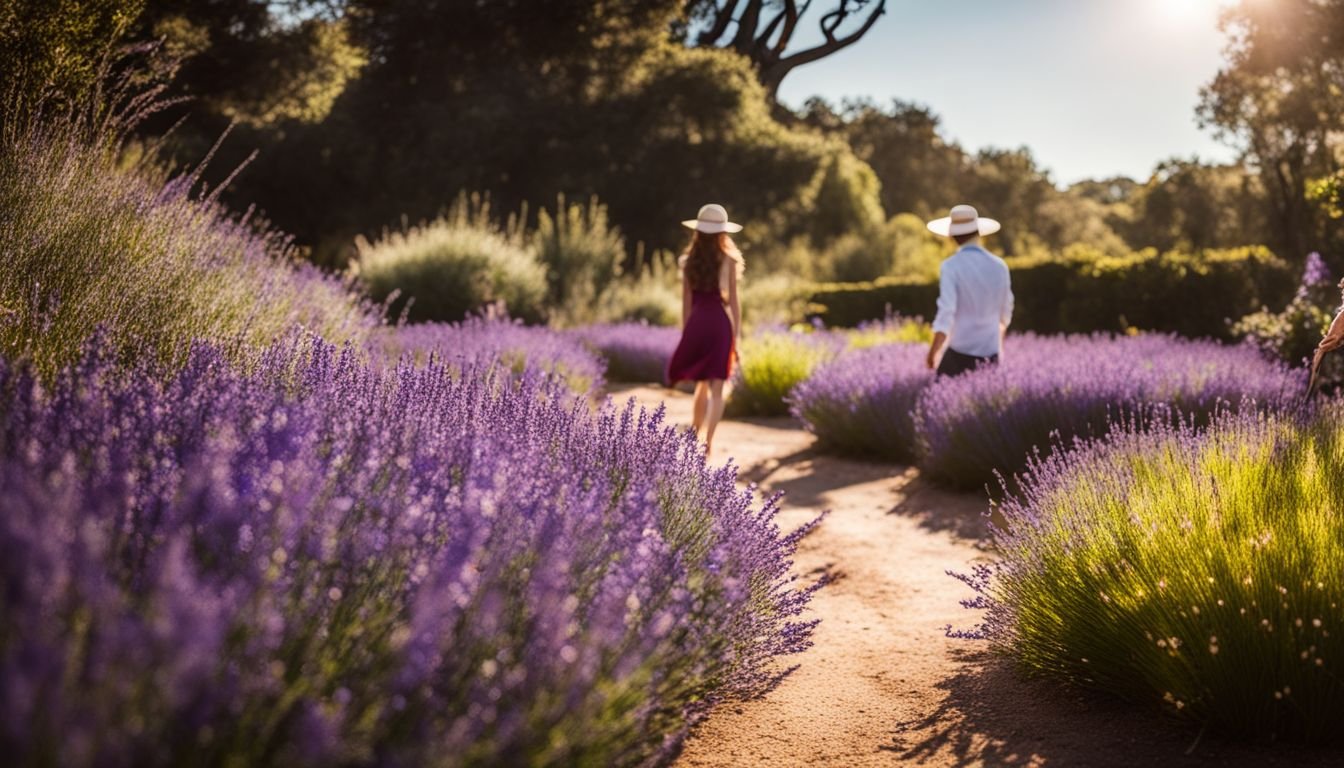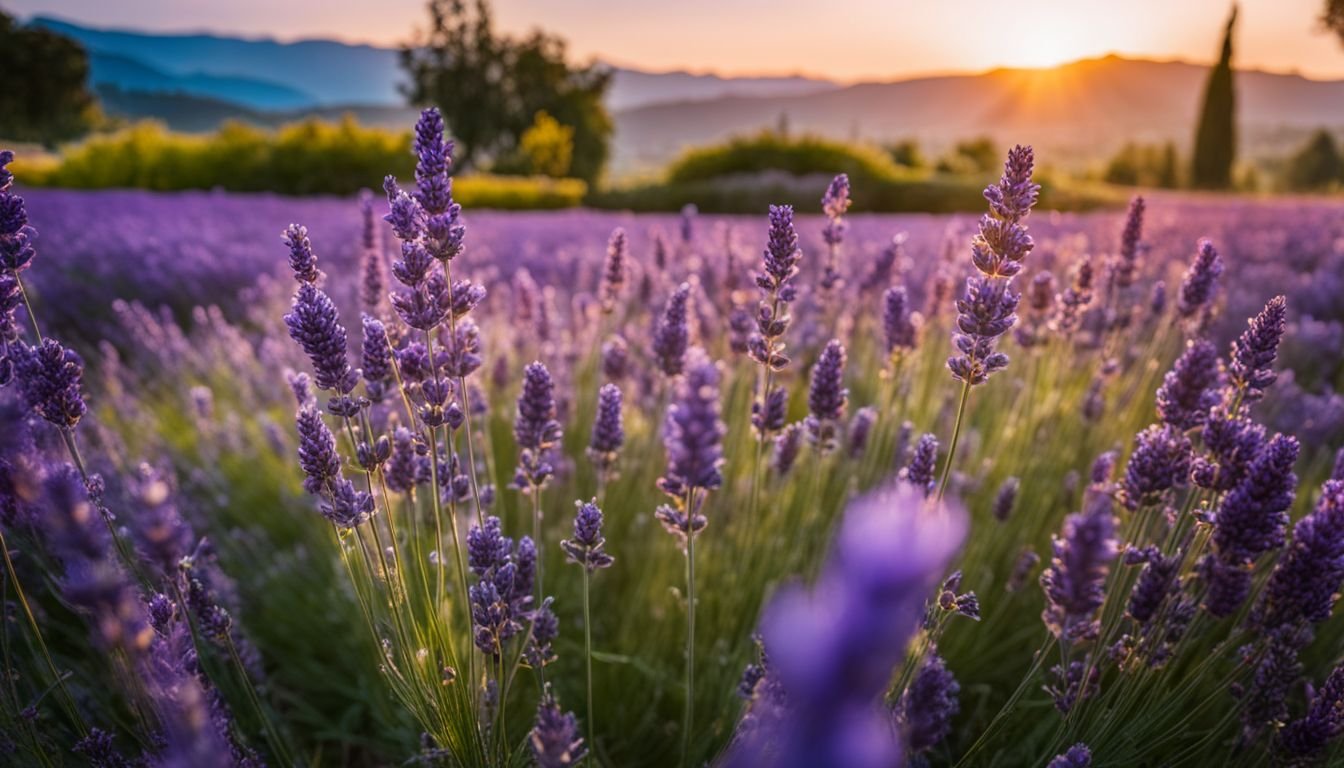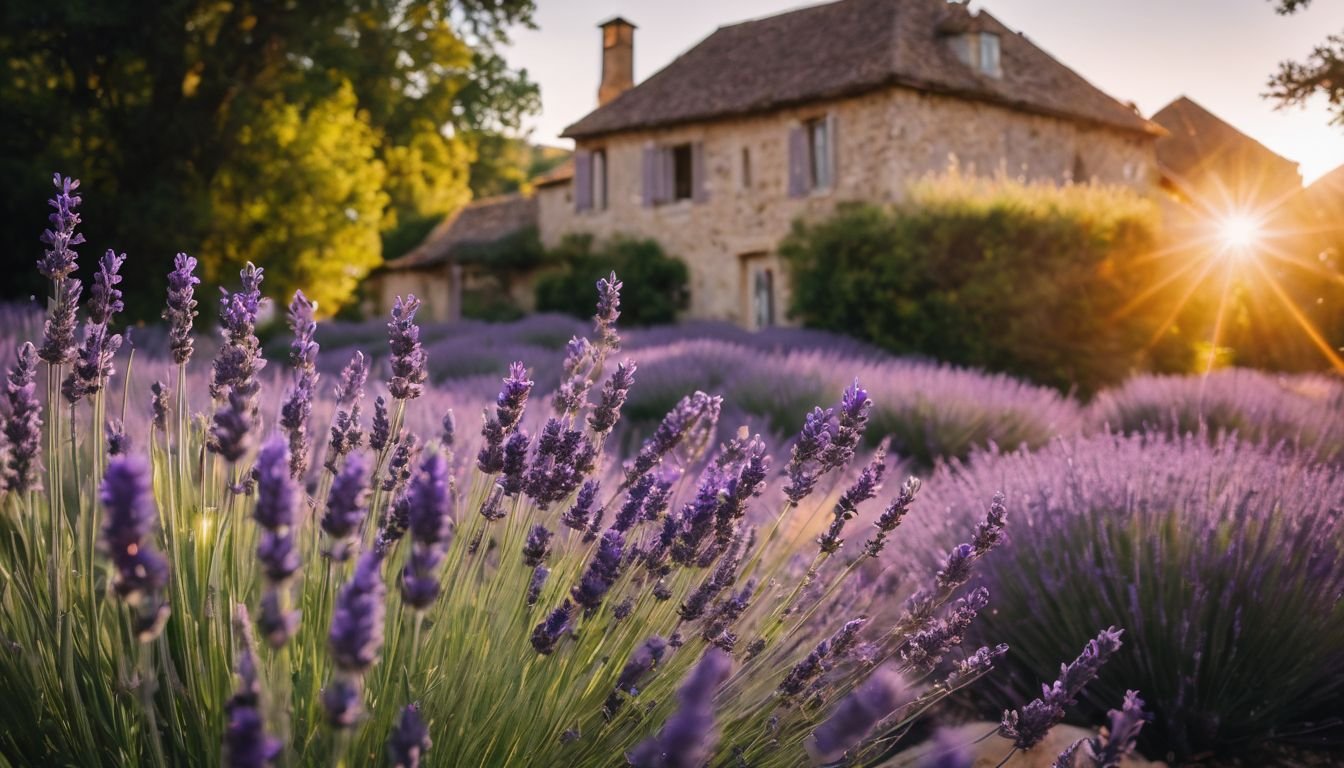Nurturing and tending to French Lavender, or as we lovingly call it, Lavandula dentata, down under can sometimes feel like you’re trying your luck at a complex puzzle. You might’ve heard tales of this fragrant perennial lighting up gardens across Australia with its vivid purple blooms and delicately fringed leaves but find yourself scratching your head wondering why it’s not quite happening in your backyard.
Given our unique Australian climate – where the sun doesn’t just shine, it blazes, coupled with rainfall that likes to keep us guessing – it’s no wonder many of us are left pondering if there’s some secret recipe to success.
Believe me, we’ve walked a mile in those gardening shoes ourselves, grappling with the same frustrations and queries about why our lavenders seemed more lacklustre than lush. But after digging deep into extensive research on what exactly makes Lavandula dentata tick, we struck gold (or should I say ‘purple’?).
One game-changing insight is realising how splendidly drought-tolerant French lavender becomes once it gets its roots properly established. This little nugget alone is enough to shift the entire way we go about watering these beauts amidst our dry spells.
Our blog post today rolls out the welcome mat for demystifying the art of growing and caring for French lavender right here in Australia. From picking that perfect sunny spot in your garden to getting clued-up on what kind of soil ticks all the boxes for these plants – we’re here to guide you through each step with straightforward advice that’s dinkum Aussie-approved.
So let’s tag team this challenge and bring those lavender dreams of yours to life! Here’s a cheerio to embarking on an odyssey towards a thriving lavender haven together.
Key Takeaways
- French lavender thrives in full sun and needs at least six hours of direct sunlight each day, making it perfect for the hot, dry Australian climate.
- It prefers fast-draining, nutrient-poor soil with an alkaline pH; steer clear of clay soils to prevent root rot and ensure your lavender grows healthy.
- Water sparingly once the plant has established itself, allowing the soil to fully dry out between watering sessions to avoid overwatering and fungal diseases.
- Avoid using too much fertiliser on French lavender; a light sprinkle of compost or diluted liquid fertiliser can be beneficial if necessary but generally, less is more.
- Regular pruning after blooming encourages new growth and helps maintain the plant’s shape while preventing it from becoming woody.
How to Grow French Lavender in Australia

We’re diving into the art of cultivating French Lavender in Australian gardens, a journey that promises to enrich your garden with beauty and fragrance. Mastering its growth requires understanding its unique needs, from the sun it basks in to the soil it thrives on.
Light Requirements
French lavender loves soaking up the sun, thriving best under full sun to partial shade. This plant truly enjoys sunny, hot, dry conditions, making it an excellent choice for our Australian gardens known for their bright and often arid landscapes.
It’s crucial we place these plants in spots where they can bask in plenty of sunlight throughout the day. Ensuring they get at least six hours of direct sunlight will promote healthy growth and a vibrant display of flowers.
During the cooler months, especially if we’re growing French lavender in pots, let’s move them to a cool area but still with lots of bright light. Overwintering potted French lavender properly helps maintain its health until it can go back outside into the sunshine.
High temperatures and low humidity aren’t just preferences; they are essential conditions for this plant’s well-being.
Selecting the right spot isn’t just about meeting its love for warmth; it also plays a critical role in preventing issues like powdery mildew which thrives under less ideal conditions.
A location that allows enough air circulation and access to strong light significantly reduces such risks. So let’s give our French lavenders what they crave: long hours under our brilliant Australian skies while being mindful of their space to ensure good health all year round.
Soil Preferences
We understand that finding the perfect soil for our gardening adventures is key, especially when it comes to growing French lavender in Australia. This plant thrives in fast-draining, nutrient-poor, alkaline soils.
These conditions might seem tough for other plants, but French lavender prefers them. It’s essential to avoid clay soils as they retain moisture and could lead to root rot in your lavender plants.
Opting for a potting mix designed for succulents can be a good starting point if you’re growing French Lavender in pots. These mixes usually provide the drainage this plant craves.
If planting directly into the garden, amending the soil with sand or gravel improves drainage and mimics the native growing conditions of these aromatic beauties. Remember, avoiding over-fertilising is crucial; these plants do best in poor soils where they can concentrate on producing their fragrant buds and leaves.
To ensure your lavender doesn’t just survive but thrives, make sure its environment mirrors its natural habitat as closely as possible. Fast-draining soil not only supports healthy root growth but also increases resistance to pests and diseases common among less tolerant varieties like English or Spanish lavenders.
Preparing your garden beds with these tips will set your French lavender up for success from germination through to full bloom.
Watering Guidelines
French lavender thrives with minimal water, showcasing its drought-tolerant nature. It’s crucial we allow the soil to dry out between watering sessions to prevent root rot, a common issue for these plants.
For those of us growing French lavender in pots, reducing water during cooler months prepares them for healthier blooming periods.
We employ drip irrigation or carefully hand-water at the base to avoid wetting the foliage, as this can lead to fungal diseases. This method ensures that water reaches deeply into the soil, encouraging a strong root system essential for robust growth and survival in extreme heat conditions.
Always check the top few centimeters of soil for dryness before deciding it’s time to water again.
Fertiliser Recommendations
We often think that all plants thrive with lots of nutrients, but French lavender breaks this mould. It actually prefers nutrient-poor soil and fares better without constant fertilising.
This means we need to resist the urge to over-feed our lavender plants. For those of us growing French lavender in pots, there’s a slight twist. These potted beauties might need a bit of help during the growing season if they’ve been in the same soil for a while and the nutrient levels have dropped.
A light sprinkle of compost or a very diluted liquid fertiliser can give these potted lavenders just what they need without overwhelming them. Just make sure any fertilisation is sparing and not part of your regular plant care routine.
Moving on, let’s explore the wonderful benefits that come with growing French lavender.
Benefits of Growing French Lavender

French lavender brings a multitude of benefits to our gardens, not only for its aesthetic appeal but also for its practical uses. As a natural insect repellent, it keeps pesky aphids at bay, making it an excellent companion plant in our veggie patches or flower beds.
This hardy perennial thrives in Australia’s challenging climates, being extremely drought-tolerant and requiring minimal water once established. Its low maintenance nature means less work for us and more time to enjoy the garden.
Beyond practicality, French lavender adds beauty with its vibrant purple blooms and unique ruffled leaves that catch the eye. It’s ideal for creating larger lavender borders that provide a stunning visual impact throughout the year.
Additionally, as a dry tolerant and frost-tolerant plant, it suits various garden settings across Australia, ensuring success even in areas with tougher conditions. With these advantages clear, let’s explore some common challenges we might face when growing French lavender and how to overcome them effectively.
Common Challenges and Solutions in Growing French Lavender
Having explored the numerous benefits of growing French lavender, we might feel eager to start our gardening journey. However, it’s crucial to address common challenges faced when cultivating this fragrant herb in Australia and offer practical solutions.
- Managing Water: Lavender, particularly the French variety (lavandula dentata), is prone to rot with too much water. This becomes a key challenge in areas of Australia that experience high rainfall. To combat this, ensure good drainage by mixing in gravel or sand with your potting soil. Consider raised beds for garden planting to prevent water from pooling around the roots.
- Coping with High Temperatures and Low Humidity: Given its preference for high temperatures and low humidity, French lavender sometimes struggles in cooler or more humid parts of Australia. Choosing a sunny spot helps maximise heat exposure. In areas with high humidity, increase air circulation around plants by spacing them well apart and pruning regularly.
- Pruning Practices: Regular pruning keeps French lavender healthy and prevents it from becoming woody. Prune immediately after blooming ends to encourage new growth and maintain shape. Using sharp shears, cut back one-third of the plant’s total height, focusing on removing old blooms and any leggy growth.
- Propagation Challenges: Propagating French lavender can seem daunting due to its moderate germination rate from seeds. For better success rates, propagate through cuttings instead of seedlings. Take cuttings from healthy plants in spring or early summer, dip them in rooting hormone powder, and plant them in a mixture of bark mulch and potting soil until they root well.
- Winter Care for Potted Plants: For gardeners growing potted French lavender, winter poses a threat as these plants are not frost-tolerant. Before the first frost hits, move pots indoors or into a greenhouse to protect them from cold snaps. Ensure they still receive plenty of light and minimal watering during their indoor stay.
- Soil Fertility Balance: While French lavender thrives in fertile soils, too much fertility can lead to excessive green growth at the expense of flowers. To strike the right balance, use a slow-release fertiliser formulated for lavender or other drought-tolerant plants once at the beginning of the growing season.
Conclusion
Caring for French lavender in Aussie gardens brings its joy and challenges. Remember, it loves the sun and thrives in dry conditions, making it perfect for our climate. Keep an eye on watering and ensure it’s minimal once the plant is established.
Pruning ensures healthy growth and more vibrant blooms. With these tips, your garden will be a haven of beautiful, aromatic French lavender that not only beautifies the space but also supports local biodiversity.
FAQs
1. What types of lavender grow best in Australia?
In Australia, both English Lavender (Lavandula angustifolia) and French Lavender, particularly the fringed variety known as L. dentata, thrive due to their drought-tolerant nature.
2. Can I use French Lavender in my cooking or for making jams?
Absolutely! French Lavender serves as a versatile culinary herb that can add a unique flavor to dishes and jams, much like adding black currants for a twist of taste.
3. How do I propagate French Lavender successfully?
French Lavender can be propagated through cuttings. Simply take healthy cuts from an existing plant and allow them to germinate in well-drained soil.
4. Is French Lavender useful for anything besides its beauty in the garden?
Yes, beyond its allure as garden lavender with stunning cut flowers, French Lavender is celebrated for its aromatherapy benefits, offering calming scents that many find soothing.
5. Can I purchase French Lavender plants using modern payment methods like Apple Pay or credit cards?
Certainly! Many nurseries now accept various payment methods including Apple Pay, Credit Card, and American Express, making it convenient to acquire your favorite varieties of lavender.


